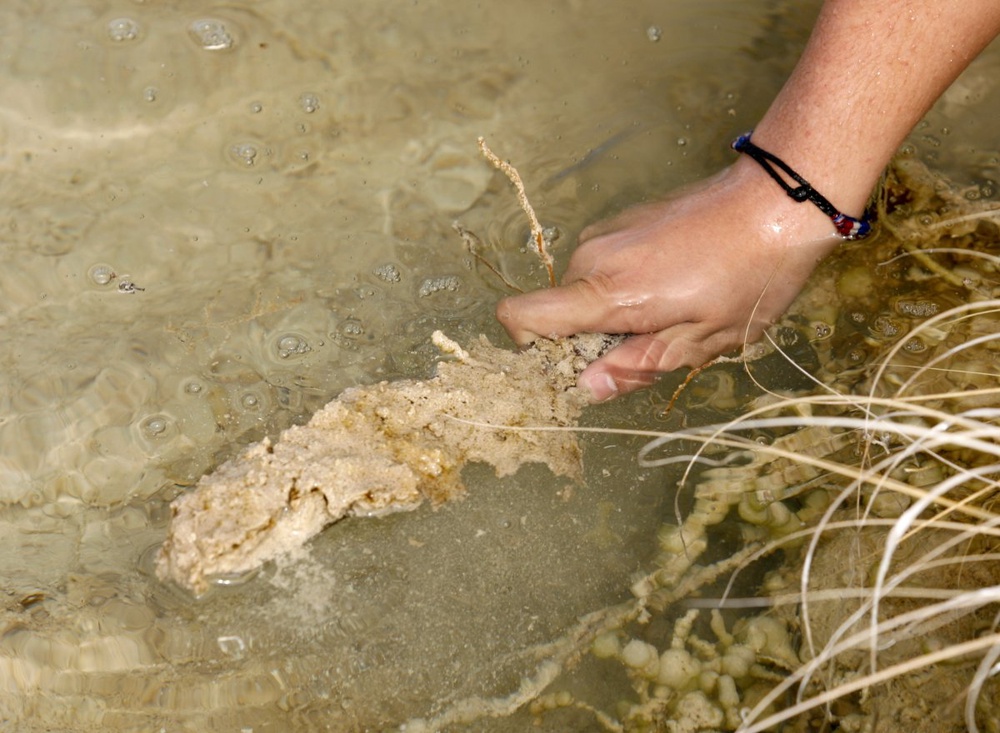
Something wiped out nearly all life on Earth more than 250 million years ago, and whatever unleashed this mass die-off acted much faster than previously thought, AFP reports according to the scientists. Based on an analysis of rocks in China, the end-Permian extinction occurred over the course of 60,000 years, give or take 48,000, researchers reported in the Proceedings of the National Academy of Sciences. That is about 10 times faster than scientists believed up until now and a blink of an eye in geological terms. "It is clear that whatever triggered extinction must have acted very quickly," said lead author Seth Burgess, a graduate student in earth science at the Massachusetts Institute of Technology. The extinction killed off 96 percent of life on Earth. Multiple theories about its origin exist, top among them that a string of massive volcanic eruptions spewed huge amounts of carbon dioxide into the atmosphere, acidifying the oceans and causing intense global warming. The latest study is based on an analysis of zircon crystals in a geological formation in Meishan, China. Fossils discovered in this region have led researchers to believe the rocks hold the secret to the end of the Permian and the beginning of the Triassic period, which is when dinosaurs and mammals began to appear. Using the latest scientific techniques, researchers have been able to refine their estimates made in 2011, when they reported that the mass extinction happened in less than 200,000 years. A closer examination of the uranium and lead in samples from volcanic ash beds suggests the deaths of nearly every living plant and creature on Earth could have happened in as little as 12,000 years. "We've got the extinction nailed in absolute time and duration," said co-author Sam Bowring, professor of earth and planetary sciences at MIT. Together with colleagues from the Nanjing Institute of Geology and Paleontology, the team found that 10,000 years before the die-off, the oceans experienced a pulse of light carbon, reflecting the mass outpouring of carbon dioxide to the atmosphere. The oceans would have undergone dramatic acidification and seen sea temperatures rise by 10 degrees C or more, a heat that would have killed most marine life. Burgess said whatever happened, it moved "fast enough to destabilize the biosphere before the majority of plant and animal life had time to adapt in an effort to survive." Researchers are now analyzing rock samples from China to those from the Siberian Traps in Russia to see how the eruptions' timelines compare. "We've refined our approach, and now we have higher accuracy and precision," said Bowring. "You can think of it as slowly spiraling in toward the truth."





Something wiped out nearly all life on Earth more than 250 million years ago, and whatever unleashed this mass die-off acted much faster than previously thought, AFP reports according to the scientists.
Based on an analysis of rocks in China, the end-Permian extinction occurred over the course of 60,000 years, give or take 48,000, researchers reported in the Proceedings of the National Academy of Sciences.
That is about 10 times faster than scientists believed up until now and a blink of an eye in geological terms.
"It is clear that whatever triggered extinction must have acted very quickly," said lead author Seth Burgess, a graduate student in earth science at the Massachusetts Institute of Technology.
The extinction killed off 96 percent of life on Earth.
Multiple theories about its origin exist, top among them that a string of massive volcanic eruptions spewed huge amounts of carbon dioxide into the atmosphere, acidifying the oceans and causing intense global warming.
The latest study is based on an analysis of zircon crystals in a geological formation in Meishan, China.
Fossils discovered in this region have led researchers to believe the rocks hold the secret to the end of the Permian and the beginning of the Triassic period, which is when dinosaurs and mammals began to appear.
Using the latest scientific techniques, researchers have been able to refine their estimates made in 2011, when they reported that the mass extinction happened in less than 200,000 years.
A closer examination of the uranium and lead in samples from volcanic ash beds suggests the deaths of nearly every living plant and creature on Earth could have happened in as little as 12,000 years.
"We've got the extinction nailed in absolute time and duration," said co-author Sam Bowring, professor of earth and planetary sciences at MIT.
Together with colleagues from the Nanjing Institute of Geology and Paleontology, the team found that 10,000 years before the die-off, the oceans experienced a pulse of light carbon, reflecting the mass outpouring of carbon dioxide to the atmosphere.
The oceans would have undergone dramatic acidification and seen sea temperatures rise by 10 degrees C or more, a heat that would have killed most marine life.
Burgess said whatever happened, it moved "fast enough to destabilize the biosphere before the majority of plant and animal life had time to adapt in an effort to survive."
Researchers are now analyzing rock samples from China to those from the Siberian Traps in Russia to see how the eruptions' timelines compare.
"We've refined our approach, and now we have higher accuracy and precision," said Bowring. "You can think of it as slowly spiraling in toward the truth."

 +7 (777) 001 44 99
+7 (777) 001 44 99















































